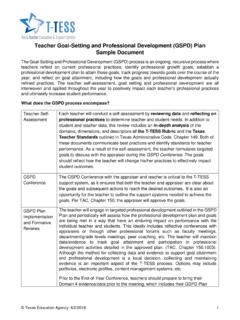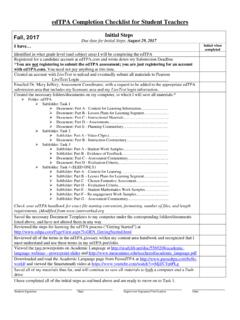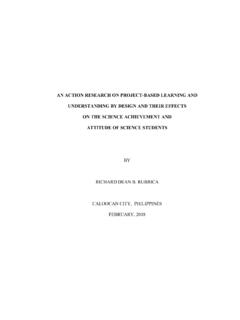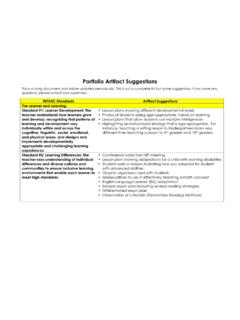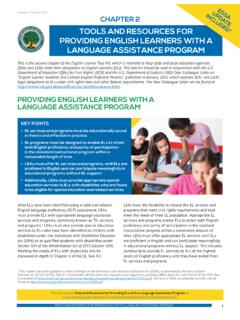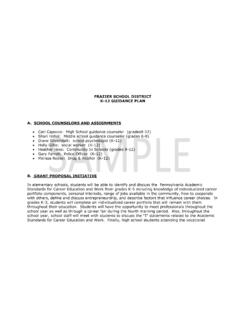Transcription of Have You Heard About Herd Immunity?
1 Have You Heard About Herd Immunity? 2013 Science Ambassador Workshop Lesson Plan By Joye Hopkins Oak Grove Elementary Atlanta, Georgia Theresa Pinilla Veterans Memorial Middle School Covington, Georgia With Achal Bhatt, PhD and Iyabode Akinsanya-Belsolow, MD. Centers for Disease Control and Prevention National Center for Immunization and Respiratory Diseases Contents Summary .. 3. Learning Outcomes .. 3. Materials .. 3. Procedures .. 4. Activities .. 5. Conclusion .. 7. Assessment .. 7. Modifications or 8. Science Education Standards ..10. Appendices: Supplementary Disclaimers The findings and conclusions in this Science Ambassador Workshop lesson plan are those of the authors and do not necessarily represent the official position of the Centers for Disease Control and Prevention (CDC).
2 Use of trade names and commercial sources is for identification only and does not imply endorsement by CDC or the Department of Health and Human Services. References to non-CDC sites on the Internet are provided as a service to readers of Science Ambassador Workshop lesson plans and do not constitute or imply endorsement of these organizations or their programs by CDC or the Department of Health and Human Services. CDC is not responsible for the content of pages found at these sites. URL addresses listed were current as of the date of publication. 2. Have You Heard About Herd Immunity? Summary This lesson demonstrates the concept and importance of herd immunity.
3 It uses hands-on classroom activities to present information on how immunizations protect groups of people from vaccine-preventable diseases and explains the importance of immunizations and why some people are not immunized. The lesson assumes that students have prior knowledge of diseases, vaccines, and the immune system. The concept and activities are appropriate for grades 5-8 but may be used for older students. Learning Outcomes The students will be able to: Describe the concept of herd immunity using the following terms: disease, immune, vaccine, protect, and susceptible List reasons why people should get vaccinated, why herd immunity is important, and why some people cannot or do not get immunized Explain what is meant by threshold for herd immunity and, when given the herd immunity threshold for a particular disease, be able to calculate the number of people in a group who need to be immunized in order to prevent transmission of that disease Graphically display how the threshold for herd immunity varies among diseases, with both numbers of individuals and percentages Materials 1.
4 Small red, green and blue items ( , index cards, plastic chips, jelly beans or other small items) in a bag. One item for each student in the class. Must include two red (representing people with communicable diseases), and then equal parts green (representing vaccinated people) and blue (representing unvaccinated people) for the rest of the students. For example: in a class of 24 students, there will be 2 red, 11 blue and 11 green items. 2. Colored pencils. Need one red, one blue, and one green for each student. Students may share pencils. 3. Unvaccinated cards (Appendix 1) a set of cards each listing one reason why someone cannot or does not get vaccinated.
5 Need the same amount as there are blue items. 4. Soft squishy balls or stress balls small and soft enough to be thrown at students without hurting anyone or damaging property. One ball for every two students in the class. 5. Herd Immunity Worksheet (Appendix 2) need 3 copies per student in the class. 6. Computers with internet access for Illsville interactive game and Herd Immunity YouTube video. Total Duration 2-3 hours 3. Procedures Teacher Preparation Ensure Internet access Identify and obtain small red, green and blue items and determine how they will be distributed. Red represents sick; blue represents unvaccinated; green represents vaccinated.
6 There should be two red items. There should be an equal number of blue and green items for the remaining students. Make enough copies of unvaccinated cards (Appendix 1) for each student with a blue item to have one card. Make three copies of Student Worksheet (Appendix 2) for each student. Resources Title: How Vaccines Prevent Diseases URL: Description: This website targets parents and provides basic information on how vaccines prevent infectious diseases. Title: Basics and Common Questions: What You Need to Know. URL: Description: This website is a collection of links to information on the basics of immunizations and answers to common questions About vaccines.
7 Title: Herd Immunity: A Rough Guide. URL: Description: This article in the Oxford Journal, Clinical Infectious Diseases, provides general information About the concept of herd immunity, as well as various threshold rates for different diseases. Title: Herd Immunity URL: Description: This website provides an overview of diseases, immunities, and vaccination, as well as access to the Illsville simulation on the site named in Extension 2. 4. Activities Duration: 90 minutes 1. Review these concepts: disease, vaccines, immune system, and immunity 2. Introduce reasons why some people do not or cannot get some vaccines Medical exemptions some acute illnesses, severe allergy to a vaccine component, compromised immune system ( , cancer or immunosuppressive therapy).
8 Religious exemptions Philosophical exemptions 3. Activity to demonstrate herd immunity Have each student in the class randomly pick or receive one of the small red, blue, or green items. Explain that students with red items have a communicable disease that they can spread to other people; students with green have been vaccinated and are protected against infection with the disease; those with blue items have not been vaccinated and are not protected. Give all students with blue items a card from Appendix 1. Each card provides a reason why they were not vaccinated. Ask all unvaccinated students to read their cards to the class.
9 Encourage discussion About the reasons why people do not or cannot get vaccinated. Tell all students with a red item to remain in their seats. Students with green or blue items should stand. Give a squishy ball to the students with a red item. Explain that when you give the word, they are allowed to throw the ball at anyone who is standing. Their goal is to hit the standing students in the torso (front or back). Explain that vaccinated students with green items are protected and allowed to use their hands to deflect the ball to keep from getting hit on their torso. Unvaccinated students with blue items are not protected and must keep their hands by their side.
10 Any unvaccinated student who gets hit in the torso must sit down. They are now sick and should be given a squishy ball to throw. Vaccinated students who get hit should remain standing. Eventually all students who were not vaccinated will get hit and have to sit, at which point they can receive a ball and throw it at anyone who is still standing (because now they are sick and can spread the disease). The number of sick people will be increasing. After each student has had a certain number of throws, the round stops. The number of throws can be varied according to the teacher to reflect disease specifics. A moderately contagious disease such as influenza could be represented by each sick student getting four throws.










